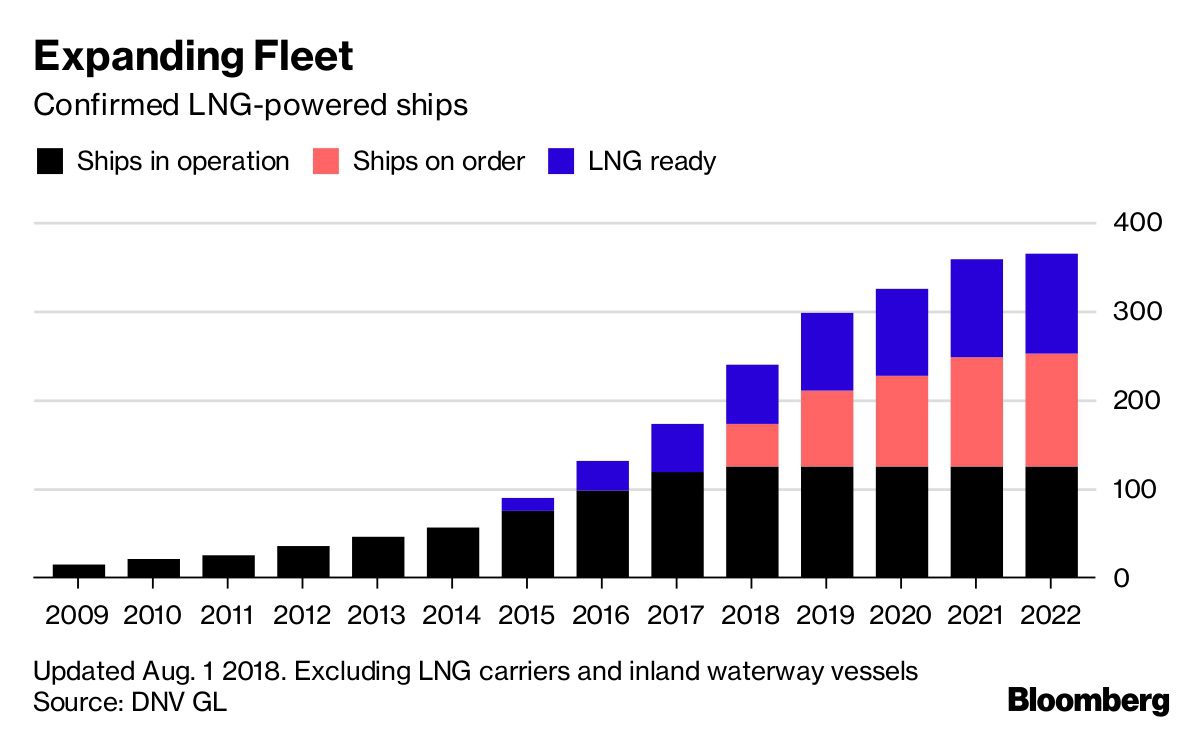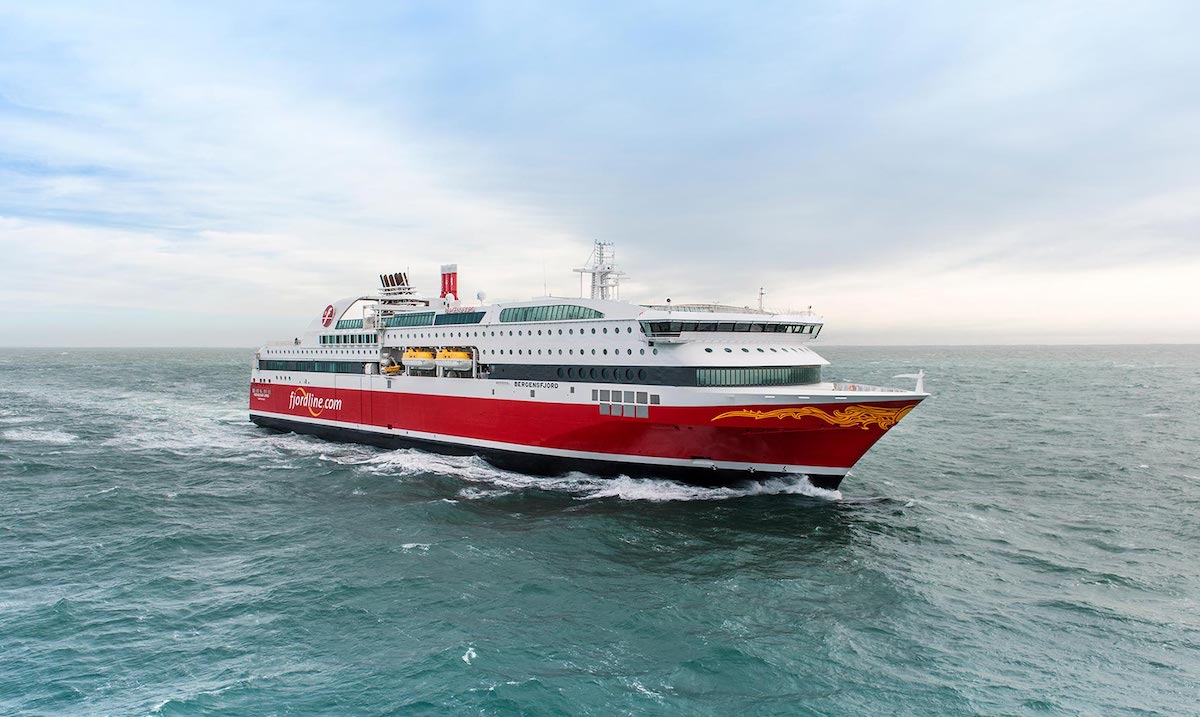MS Bergensfjord. Photo: Fjord Line
By Anna Shiryaevskaya (Bloomberg) — The sleek cruise-ferry idling at the harbor in western Norway while picking up passengers spews none of the dirty black smoke typical of ships at busy ports elsewhere.
With a capacity of 1,500 passengers and 600 cars, the MS Bergensfjord is one of the growing number of vessels running on liquefied natural gas, which emits a fraction of the pollutants of the heavy oil and diesel typically used in ships. It’s an example of how one of the dirtiest industries is responding to demands for cleaner air and pristine coastlines.
It’s also the latest opportunity for the gas industry, which is quickly expanding along with demand for greener forms of energy. That demand may spur a five-fold surge in LNG vessel production over the next eight years. Carnival Corp., the world’s biggest cruise line operator, just added the first of 11 LNG-powered vessels to its fleet, and competitors have their eyes on buying more.
“We are already seeing cruise ships using LNG fuel,” said Paul Wogan, chief executive officer of GasLog Ltd., an LNG tanker owner and operator whose whole fleet can run on the fuel it carries. “You don’t want see the big black plumes of smoke at the beautiful locations that they go to. LNG as a bunker fuel will continue to grow in demand.”
Diesel and ship oil are blamed for harming human health and the environment, creating sooty black carbon when they burn. These tiny particles settle in the lungs and on land and ice, where they speed melting by absorbing rather than reflecting the sun’s rays.
Norway, determined to protect is pristine coastal scenery and chalky-white glaciers, has become the biggest operating area of ships using LNG as an alternative. It has become an early mover on international rules starting in 2020 that are designed to combat shipping pollution.LNG is natural gas cooled to minus 162 degrees Celsius (-260 Fahrenheit), which shrinks its volume to ease storage and transportation. The advantage of the fuel is that it’s abundant and available. Production from Qatar and Russia to the U.S. is forecast to increase by 30 percent in the six years to 2023, according to the International Energy Agency, which advises most major economies on energy policy.

LNG emits about 25 percent less carbon dioxide than conventional shipping fuels. It contains virtually no sulphur, 85 percent less nitrogen oxide, and 99 percent less particulates, exposure to which has been linked to cancer. That’s key to reducing emissions from the 90,000-strong global shipping fleet, which consumes about 5% of the world’s oil demand every day, according to Bloomberg NEF.
The gas-powered vessels’ share of the world’s commercial shipping fleet is minuscule, but growing. There’s 261 in service and on order with another 111 considered LNG-ready, according to DNV GL, which certifies ships for safety. That can reach 1,500 by 2026, according to Finnish engineer Wartsila Oyj, which provides marine LNG fuel systems.
Rules mandated by the International Maritime Organization in October 2016 cap sulfur levels in ships’ fuel from 2020. To comply, shipowners can install costly pollution-reducing scrubbers, use higher-grade fuel oils or even reduce their speed. But these are short-term measures compared with converting to LNG, said GasLog’s Wogan.
Still, hurdles remain. LNG bunkering, or refuelling, facilities aren’t widespread, and the lack of them is a big obstacle for shipowners to commit to converting to the fuel, according to Jeff Miers, a managing director in Accenture’s Energy practice.
New ships “are more likely to be built to operate on natural gas if their expected routes already have LNG bunkering infrastructure,” he said. “But for ships that don’t ply fixed routes, the flexibility to refuel anywhere can outweigh the financial benefit of operating on LNG.”
LNG isn’t the only clean-energy option, either. Battery technology is moving beyond just providing top-up energy and making short journeys. Shipowners are also looking into hydrogen power, a technology that, unlike LNG, has zero carbon dioxide emissions. Even so-called rotor sails are being tried by merchant shippers to supplement battery and conventional power.
Back at the port of Risavika, Norway, Gunnar Helmen, a sales manager at Skangas AS, a small-scale LNG plant that fuels the Bergensfjord cruise ferry, sees LNG and LNG-battery hybrids as the future. Shipowners now have a tough time deciding where their next fuel is going to come from, he said, adding that vessels consume so much fuel that natural gas is one of the only practical replacements for heavy fuel oil available.
“We don’t let cruise liners that are polluting black smoke enter our fjords to look at the nice nature, it just doesn’t make sense,” Helmen said. “We see more and more shipowners tending to go for the green fuel.”
© 2018 Bloomberg L.P

 Join The Club
Join The Club












